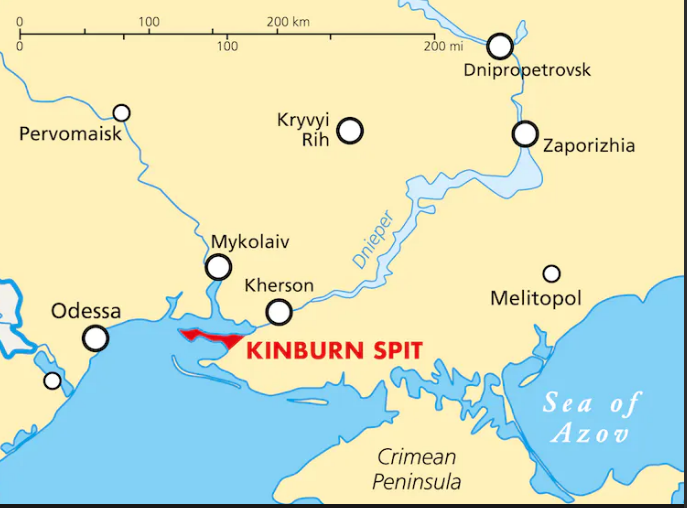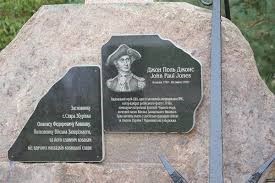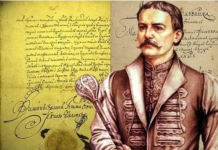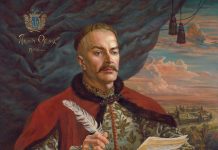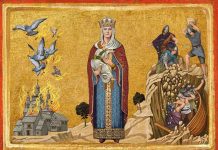John Paul Jones, a Revolutionary War hero known as the father of the U.S. Navy, left a trait in Ukraine’s history. In his memoirs, John Paul Jones described how it all started – according to him, on the 20th December 1787, “Mr. Jefferson, the ambassador of the United States, visited me on the night of my arrival, and informed me that M. de Simolin, minister plenipotentiary of her imperial majesty of all the Russias, … appeared anxious to succeed in prevailing on me to go to Russia, to command the fleet against the Turks in the Black Sea.” On 25 April 1788, John Paul Jones had his first audience of the Russian Catherine II in St. Petersburg. On the 19th of May, he already met Potemkin at St. Elizabeth (city of Kropivnitsky in presnet-day Ukraine), who “received me with much kindness and destined me the command of the fleet of Sevastopol against the capitan-pacha, who, he supposed, intended to make descents in the Crimea. His highness was mistaken in this, and the next day he received information that the capitan pacha was at anchor within Kinbourn, having come to succor Oczakow with a hundred and twenty armed vessels and other armed craft. The prince marshal then, requested me to assume command of the naval force stationed in the Liman, (which is at the embouchure of the Dnieper,) to act against the capitan pacha till Oczakow should fall. I considered this change as a mark of confidence flattering to myself… having received my orders, I set out on the same day for Kherson, in company with the Chevalier de Ribas, Brigadier du Jour of the prince marshal.”
As can be seen, initially, John Paul Jones was to go to the Crimean port of Sevastopol, but the situation developed so quickly, that he hoisted his flag on board the Wolodimir, a 70-cannon ship, already on the 26th of May, 1788, near the Ukrainian city of Kherson.
It is hard to believe, but in addition to all that, General Suvorov, commandant of Kinbourn, made the rear admiral responsible for the safety of that key fortress. There is even a note dated 31st of May from Suvorov to Jones where Suvorov declares that he cannot answer for results. It means that already on the fifth day of his presence in the war theatre, Admiral Jones had full responsibility not just for the Russian’s Black Sea fleet, but also for the key fortress in their defense.
The American admiral writes that he was literally struck at finding the tongue of land at Kinbourn, which commanded the only passage by which large vessels could either enter or come out of the Liman without any artillery. He instantly spoke of it to Suvorov and proposed to establish one or more strong batteries upon it, which was done in a short while.
The squadron under Jones on that day consisted of only one frigate carrying 40 guns of different calibers, four carrying 26, two 24, one 20, and one 16, and four vessels carrying in all 66 guns. His own vessel, the Wolodimir, a 70-gun ship, carried only 24 twenty-four pounders and two licornes – “the shallowness of the Liman would not allow of a greater weight of metal.”
There was one force under his command though, John Paul Jones was truly impressed with: “Our force in rowboats is greatly superior to the Turks, and we can at any time go to the assistance of Kinbourn, though the wind should be contrary.”
Those rowboats were the famous Zaporizhian Cossacks’ chaikas, and, according to the Admiral’s quote above, they were his major hope for maneuvering the large ships in case of even the contrary wind.
It is worth mentioning that several years before the war with Turkey, Catherine II ruined the Zaporozh Sich, but some Cossack troops still decided to fight on the Russian side.
During smaller battles before June 17, John Paul Jones had several occasions to demonstrate his typical derring-do like, in one of the most famous episodes approaching at night a Turkish ship on one of the Cossack boats and painting “to be burnt. Paul Jones” on the ship’s side (which was accomplished the next day.
The Cossacks were so impressed by his bravery, that a couple of days before the Battle of the Liman, they awarded Jones the rare privilege of being inducted into the Cossack Brotherhood. Admiral was given a Cossack smoking pipe, a saber, and the red Cossack trousers – sharovary – which he proudly wore aboard his ship. During the ritual, he was also given a new Cossack name – Cossack Pavel Dzhones.
So, the Founder of the American Navy became an Honorary Cossack of the Zaporozhian Army.
On June 16–17, 2013, U.S. Ambassador John F. Tefft visited Ochakiv and Kherson to commemorate the 225th anniversary of John Paul Jones’s induction into the Cossack Brotherhood.
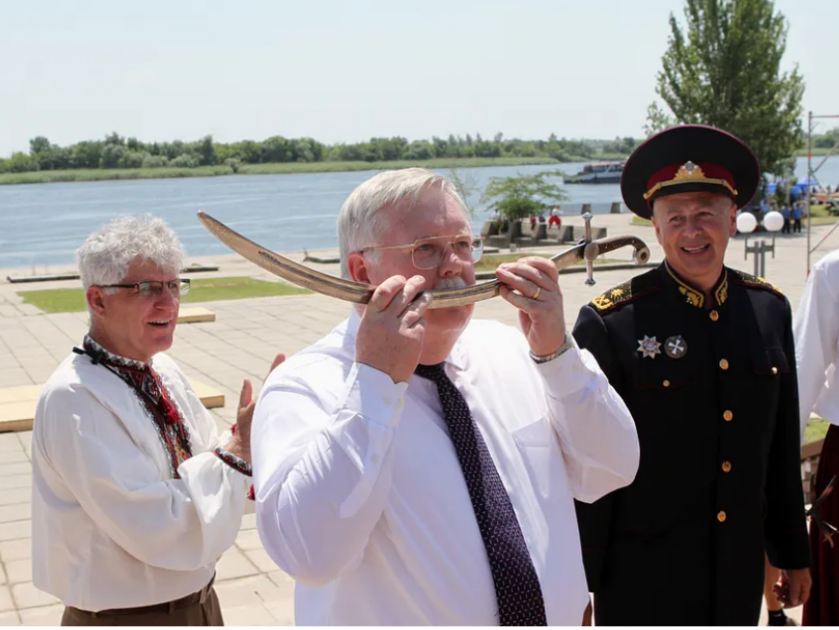
Excerpt is taken from the “Ukraine & the United States” e-book. NEXT PART >
